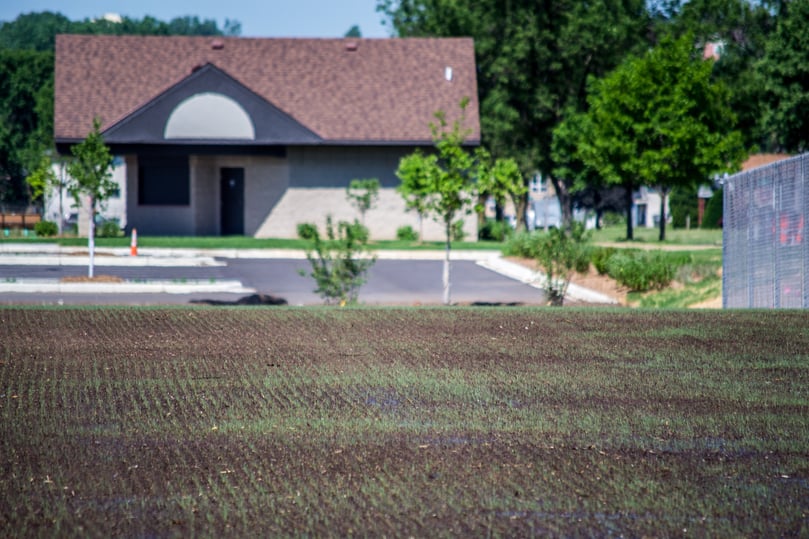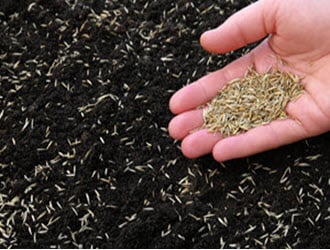Whoops. You missed the best time to seed your lawn and now the temperatures are too cold to do so. There isn’t enough time to establish new grass before Winter comes but you desperately need grass by next Summer. Have no fear, try dormant seeding. Never heard of dormant seeding? It’s a great alternative to lawn installation for those who missed the prime window for a grass seed lawn.
What is dormant seeding?
Dormant seeding is the process of spreading grass seed during the time of year when seeds won’t germinate (dormant). This time of year, is typically late Fall to early Winter in Minnesota because the outside temperature drops below 50 degrees. The method used is like any other grass seeding method, but watering and maintaining the seed isn’t necessary after it’s been sown. This method is perfect for those who missed the seeding window of early Fall, or are trying to get an early start for next Spring.
When To dormant seed
The time of year when temperatures are cold enough to dormant seed in Minnesota is late October to early December. Once the soil temperature drops below 50 degrees, grass seed no longer will germinate. Seed that is put down will sit dormant over the Winter underneath all the snow. When the temperature rises in Spring, the snow will melt, and the grass seed is already in place to start growing right away.
WHEN IS THE BEST TIME TO INSTALL A LAWN?
How to dormant seed
The process of dormant seeding is basically the same as if you were to seed during Spring, Summer, or Fall. Soil needs to be prepared by loosening it up and clearing debris (dead grass, weeds) so the seed can be spread on the bare dirt. A slit seeder is a machine commonly used for larger applications. It will make a shallow slit in the ground that the seeds rest in. Once the seeds are sown, make sure they are watered. With conventional seeding, continual watering and maintenance would be necessary for proper growth. But with dormant seeding, the seeds can be left alone until Spring.

Why is dormant seeding beneficial?
The fact that the seeds don’t germinate immediately would normally be viewed as a negative. However, dormant seeding can be very effective when done properly. One of the most important components of growing grass from seed is the contact between the seed and soil. Over the course of winter the ground will freeze, thaw, shift, and heave. All this movement allows the seeds to settle into the soil rather than sit on the surface. The cooler temperatures and snow coverage also help to keep the soil moist when the seeds start to sprout in the Spring.
Hopefully all your Fall chores are complete; including your sprinkler system winterization. But if there is one last chore to take care of, try dormant seeding. This process can be very tricky though, so calling a professional is your best bet at a lush green lawn. For those who missed the prime window for a grass seed lawn but need to fix their lawn, dormant seeding will give you a head start on your lawn next Spring.

